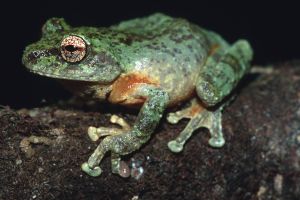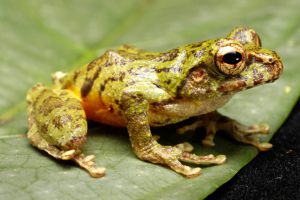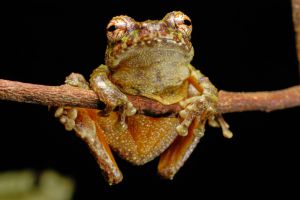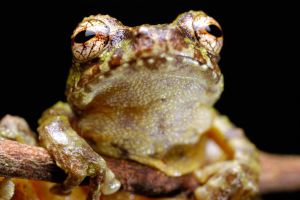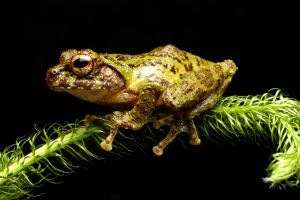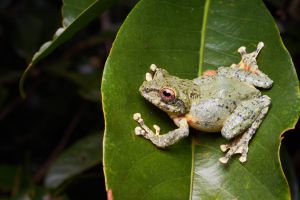
Frogs of Borneo

Frogs of Borneo

Frogs of Borneo

Frogs of Borneo

Frogs of Borneo

Frogs of Borneo

Frogs of Borneo

Frogs of Borneo

Frogs of Borneo

Frogs of Borneo

Frogs of Borneo
Bornean Families
Philautus:
bunitus
Green Bush Frog
Philautus bunitus differs from most other Bornean Philautus species by its distinctive green coloration with dark markings and its large (relative to other Philautus) body size. Adult males reach about 40 mm in snout–vent length (SVL), and females up to 46 mm. Inger et al. (1995) derived the species name bunitus from the Greek bounites, meaning “dweller in the hills.” This species inhabits primary montane and submontane forests between 900 and 1600 m a.s.l. in western Sabah and eastern Sarawak. It could possibly occur in some mountain regions of northern Kalimantan. It is especially abundant around Gunung Kinabalu, which makes it remarkable that it was only described in 1995 by Inger, Stuebing, and Tan.
The body is stocky, and the head is broad—wider than long. The snout is broadly rounded in dorsal view and gently rounded in profile. The canthus rostralis is distinct. Fingers and toes end in expanded adhesive discs; the toes are partially webbed, with the webbing of the inner toes yellow in color. The inner metatarsal tubercle is oval, and the outer one is absent. The dorsal skin is relatively smooth, bearing scattered small tubercles, while the ventral skin is coarsely granular. A strong, slightly curved supratympanic fold extends from the eye to the arm, and the tympanum is distinct, situated just below the fold. The pupil is horizontally elliptical.
Dorsal coloration is leafy green, with variable dark speckling and markings on the back and head. A dark interorbital bar and dark crossbars on the limbs are usually present. The ventral surfaces may have a green or orange tint. The iris is pale tan with a dark reticulation and may show slight reddish tones in the anterior and posterior sectors.
The advertisement call consists of a series of loud, harsh notes, commonly heard around the Gunung Kinabalu National Park headquarters. Despite its local abundance, the species is rarely seen, as individuals typically perch several meters above the ground in vegetation.
Preliminary evidence suggests that Philautus bunitus undergoes direct development, with fully developed froglets hatching from the eggs. Eggs are believed to be deposited in moist epiphytic plants, although further confirmation of this behavior is needed.
Version tracking
-
08.10.2025
updated
